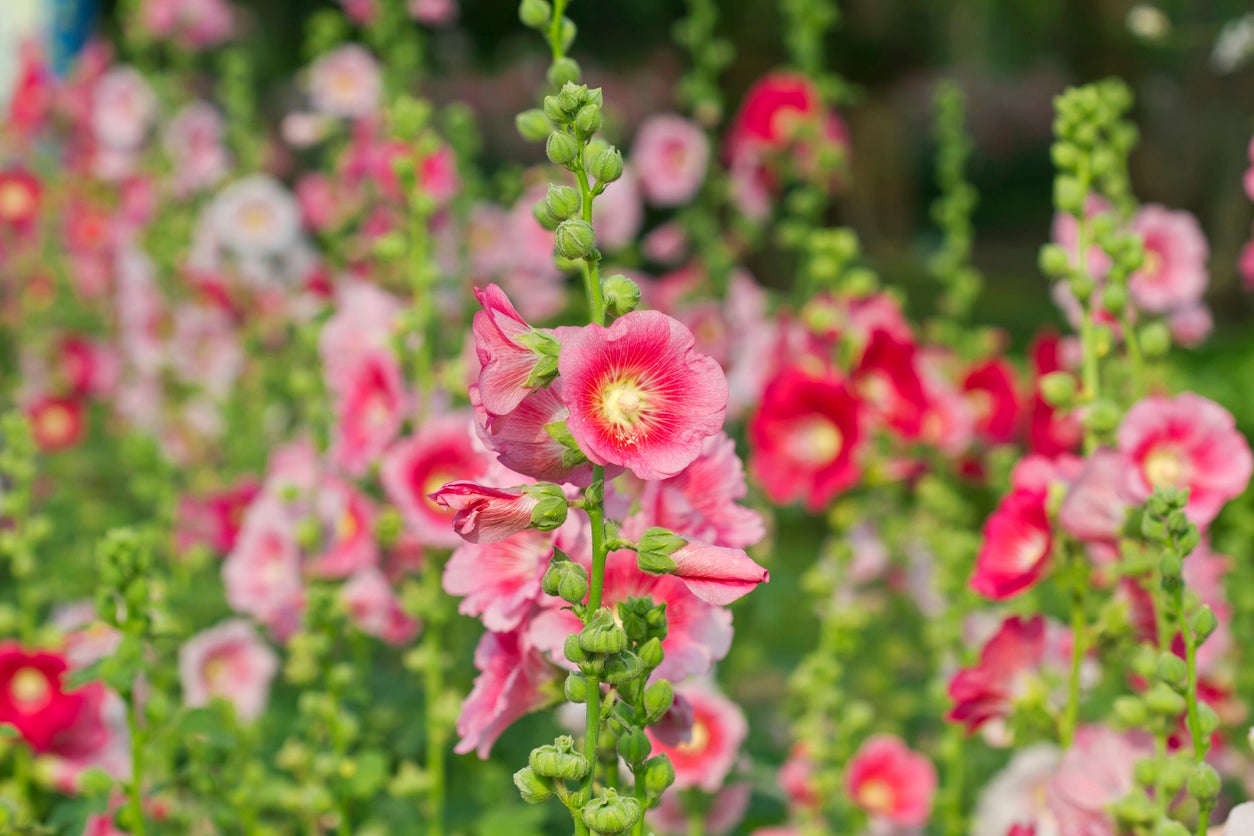Hollyhock Flower Removal: Do Hollyhocks Need To Be Deadheaded


Hollyhocks are the showstoppers of the flower garden. These towering plants can grow to 9 feet (3 m.) tall and produce stunning, large blooms. To make the most of these gorgeous flowers, know how best to care for them. Do hollyhocks need to be deadheaded? Yes, if you want to keep them looking great and blooming for as long as possible.
Should You Deadhead Hollyhocks?
Deadheading hollyhock plants isn’t necessary, but it is a good idea. It can help keep the blooms going longer throughout the season and also keeps your plants looking nicer and tidier. Think of deadheading this plant as a way of pruning to coax it into producing flowers right up to the fall and even the first frost. It’s also a good idea to remove dead and damaged leaves, too, for a better overall look and a healthier plant.
Keep in mind, too, that deadheading will prevent or minimize reseeding. Hollyhock is a biennial in most growing zones, but if you let the seed pods develop and drop, they will regrow from year to year. You can deadhead to prevent this, to collect and save the seeds, or to manage how and to what extent the plants reseed and spread.
How and When to Deadhead Hollyhocks
Removing spent hollyhock blooms is pretty simple: just pinch or clip off those that have faded and finished flowering, before the seed pod forms. You can do this throughout the growing season. Pinch off spent blooms and dead leaves regularly to promote more growth and flowers.
Toward the end of the growing season, when most of the blooms are finished, you can cut down the main stems of your hollyhocks. If you want the plant to continue coming back year after year, you can leave some seed pods on the stalk. These will develop, drop, and contribute to more growth in the coming years.
Hollyhock flower removal is not something you have to do to grow this plant, but it does benefit blooming by forcing energy and nutrients into flower production rather than seed production. Keep deadheading to promote flowering and to keep your plants tidy and healthy.
Sign up for the Gardening Know How newsletter today and receive a free copy of our e-book "How to Grow Delicious Tomatoes".

Mary Ellen Ellis has been gardening for over 20 years. With degrees in Chemistry and Biology, Mary Ellen's specialties are flowers, native plants, and herbs.